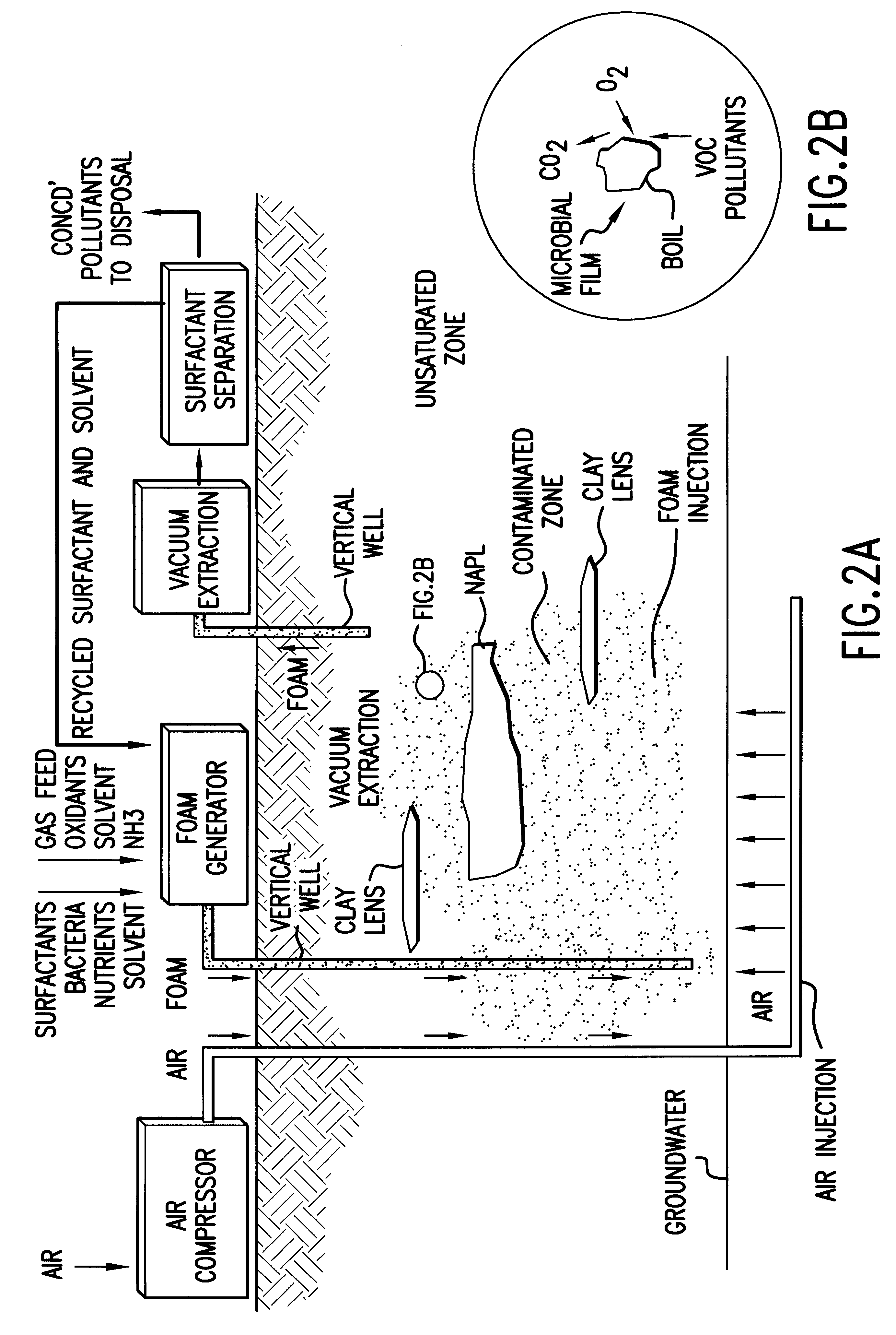Foam transport process for in-situ remediation of contaminated soils
a technology of in-situ remediation and foam transport, which is applied in the direction of other chemical processes, mixing, borehole/well accessories, etc., can solve the problems of poor penetration of water carrier stream into clay lenses and non-aqueous phase liquids, move in a downward direction, and contamination of soil, etc., to achieve the effect of cost-prohibitive excavating, difficult to treat without considerable risk, and poor penetration of water carrier stream
- Summary
- Abstract
- Description
- Claims
- Application Information
AI Technical Summary
Problems solved by technology
Method used
Image
Examples
Embodiment Construction
FIG. 1 shows a schematic diagram of the process for in-situ remediation of contaminated soils in accordance with one embodiment of this invention in which foam is introduced into the underground in-situ contaminated treatment zone through horizontal wells. In particular, the foam having the requisite characteristics for use in accordance with the process of this invention is produced in a foam generator by passing a gas through a finely divided frit submerged in an aqueous solution containing a surfactant and the desired treatment agents, that is, nutrients, trace metals, bacteria, oxidants, solvents, and the like. The surfactant is preferably a non-ionic surfactant which produces a foam which is collapsible in the underground in-situ treatment zone. The gas used for making the foam may also contain nutrients, for example ammonia, nitrous oxide, triethyl phosphate, and the like, or solvents, such as methanol and / or ethanol.
The foam, which is produced under pressure, that is greater ...
PUM
| Property | Measurement | Unit |
|---|---|---|
| diameter | aaaaa | aaaaa |
| pressure | aaaaa | aaaaa |
| sizes | aaaaa | aaaaa |
Abstract
Description
Claims
Application Information
 Login to View More
Login to View More - R&D
- Intellectual Property
- Life Sciences
- Materials
- Tech Scout
- Unparalleled Data Quality
- Higher Quality Content
- 60% Fewer Hallucinations
Browse by: Latest US Patents, China's latest patents, Technical Efficacy Thesaurus, Application Domain, Technology Topic, Popular Technical Reports.
© 2025 PatSnap. All rights reserved.Legal|Privacy policy|Modern Slavery Act Transparency Statement|Sitemap|About US| Contact US: help@patsnap.com


